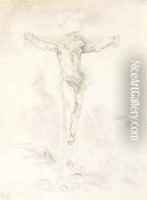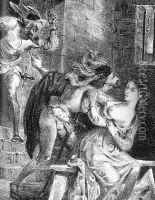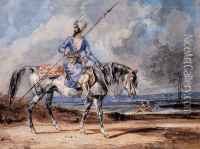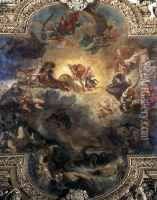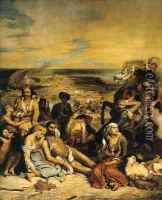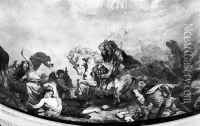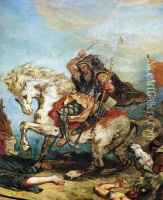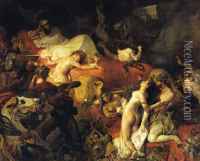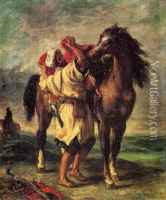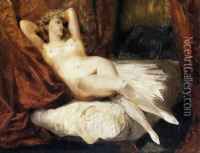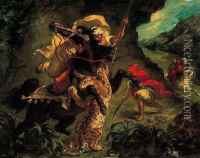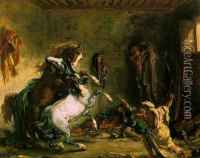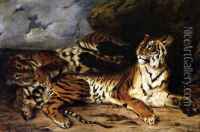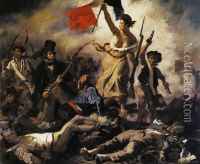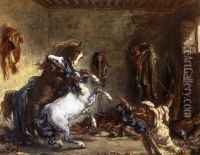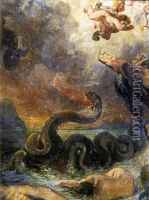Eugene Delacroix Paintings
Ferdinand Victor Eugène Delacroix was a French Romantic artist renowned for his expressive brushstrokes and his study of the optical effects of color. Born on April 26, 1798, in Charenton-Saint-Maurice, near Paris, Delacroix was trained by Pierre-Narcisse Guérin in the neoclassical style. Despite this early influence, Delacroix’s work would diverge significantly from the prevailing neoclassical aesthetic of his time, which was championed by artists such as Jacques-Louis David.
Delacroix's first major painting, 'Dante and Virgil in Hell' (1822), was a critical success and set the tone for his future works, which would often depict scenes of dramatic intensity. One of his most famous works, 'Liberty Leading the People' (1830), is a symbol of the July Revolution and is celebrated for its revolutionary spirit. His art was characterized by a fascination with the exotic, which was reflected in works such as 'Women of Algiers in their Apartment' (1834), inspired by his travels to North Africa.
Throughout his career, Delacroix was preoccupied with the tension between order and chaos, reason and emotion. This is evident in his many works that depict the violence and sensuality of historical and contemporary events. He was also a highly influential lithographer and produced a number of illustrations for works by William Shakespeare, Walter Scott, and Johann Wolfgang von Goethe.
Delacroix's legacy extends beyond his immediate impact on the Romantic movement. He influenced a number of Impressionist and Post-Impressionist artists, including Paul Cézanne and Vincent van Gogh, who admired his use of color and brushwork. In his later years, Delacroix focused on decorative projects and murals for various public buildings, including the Palais Bourbon and the Louvre.
Eugène Delacroix died in Paris on August 13, 1863. His work continues to be celebrated for its dramatic and emotional power, its pioneering approach to color, and its contribution to the transition from Neoclassicism to Modern art.

